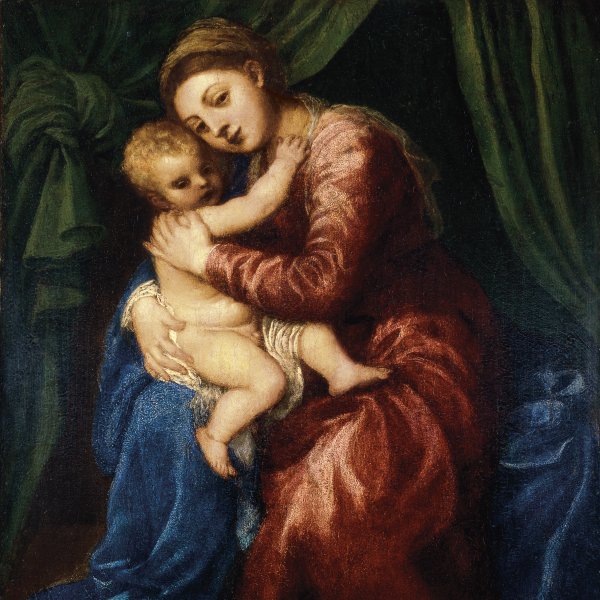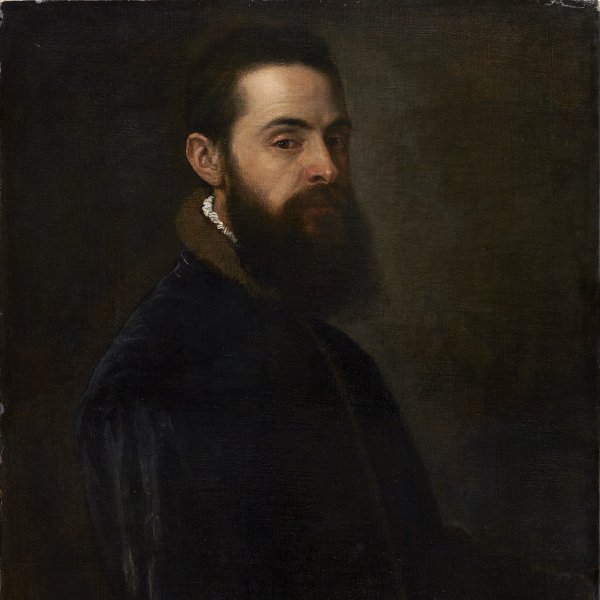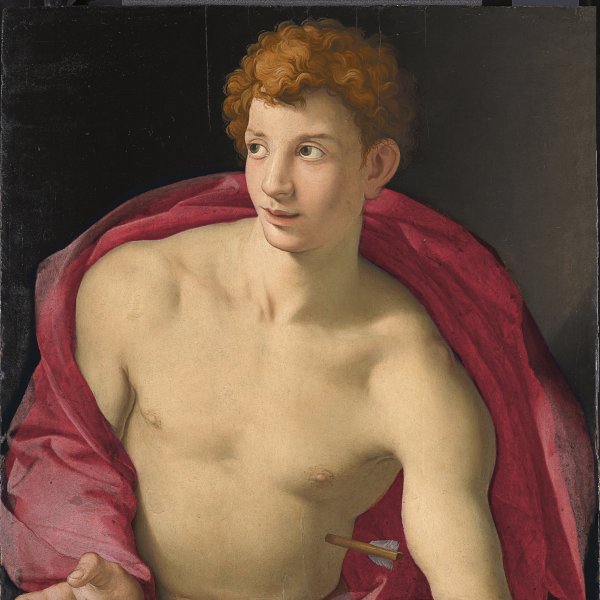Portrait of a Young Woman
Paris Bordone moved to Venice with his family when still a child. He trained there in Titian’s workshop, which he left around 1518 to work independently. His oeuvre, which includes religious, mythological and allegorical works as well as portraits, has been difficult to catalogue due to the relative lack of information regarding his life and professional activities. Bordone’s painting was influenced at different periods by Giorgione, Titian, Lorenzo Lotto and Pordenone. His early works date from the 1520s and comprise religious compositions such as The Virgin and Child with Saint George and Saint Christopher in the Galleria dell’Accademia in Lovere. Bordone worked in the Veneto and Lombardy and for the Fugger court at Augsburg. According to Vasari, he was in Fontainebleau between 1538 and 1539 at the court of François I, while a second period there has been suggested around 1559 at the court of François II. Between 1540 and 1543 he seems to have made a trip to Bavaria, returning to Venice in 1543, then living in Milan from around 1548 to 1551. In his compositions Bordone used spacious settings into which he set episodes such as The Presentation of the Ring to the Doge (Accademia, Venice), which was painted for the Sala del Albergo in the Scuola Grande di San Marco and whose setting is based on Serlio’s architectural studies.
A distinctive chapter within Bordone’s oeuvre consists of his female figures. According to Vasari these allegories or mythological figures were painted during his time at Fontainebleau. The present canvas is a good example of this type. Bordone depicts a young girl wearing costly dress with a low neckline revealing her breasts. Located in an interior, she holds a fine chain in her left hand that runs along her arm, around her back and which is then tied to a small monkey who is peacefully eating, seated on a cornice. In her other hand the young woman holds two roses that she has probably taken from the fine vessel with its raised motif of satyrs. Scattered around its base are pieces of fruit from the monkey’s food. Both the figure and the elements selected for the scene suggest that the composition should be read in an amorous key. The roses held by the beautiful woman are associated with Venus while the monkey, whom she controls with the chain, is associated with vice and lust. The female type responds to a model created by Titian and Palma and which Bordone used in other works.
The prototype of beauty that this figure represents has been related to other compositions by the artist such as the one in the Doria Pamphilj gallery in Rome, in which she is transformed into Venus accompanied by Mars and Cupid. Portrait of a Young Woman has been dated to after 1543, following Bordone’s move to Venice.
Mar Borobia











